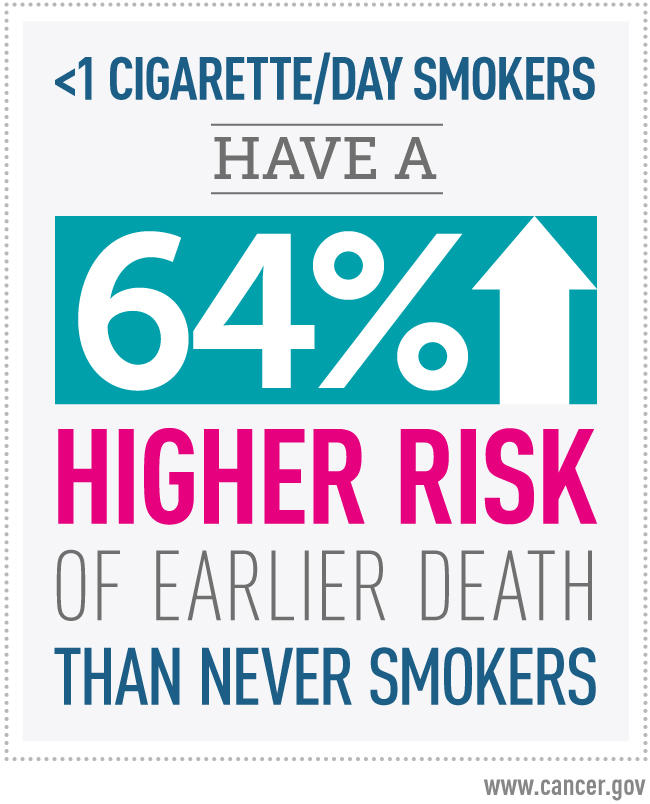Overview
In 1995, the NCI launched the NIH-AARP Diet and Health Study, a cohort that was and remains the largest prospective in-depth study examining the relationship between diet, lifestyle, and cancer risk.
Study Highlights
Start: 1995
Participants: 567,000+
Average age: 62 years
Data Sharing
Accepting proposals for new projects.
Read More
See all DCEG research on diet and physical activity.
In partnership with AARP, more than 567,000 older Americans participated in the study which helped redefine research on diet and health.
Many of the study's findings have also changed the public's perception of cancer and diet, including the relationship between drinking coffee and a lower risk of dying from heart disease, respiratory disease, stroke, injuries and accidents, diabetes, and infections.
Further investigations explored the trade-offs between sedentary behavior and physical activity; adults who were more active had lower overall mortality by replacing an hour of sitting with exercise.
The NIH-AARP Diet and Health Study's design continues to inspire new investigations, such as the Connect for Cancer Prevention Study.
Study Team
The study team includes Drs. Charles E. Matthews, Linda Liao, Rashmi Sinha. This team of experts is well-versed in various areas of etiologic research for multiple cancers.
These investigators, from the Metabolic Epidemiology Branch and Occupational and Environmental Epidemiology Branch, assumed leadership of the study following the death of Arthur Schatzkin, M.D., Dr. P.H., the principal investigator who conceived and launched the NIH-AARP Diet and Health Study.
Read more about Dr. Schatzkin and his work to address the methodological problems faced by prior epidemiologic investigations of diet and health.
Background & Purpose
The NIH-AARP Diet and Health Study was developed at the National Cancer Institute to improve our understanding of the relationship between diet and health. It remains the largest prospective in-depth study of diet and health ever conducted. The study was made possible by a collaboration with AARP (formerly the American Association of Retired Persons), which helped researchers recruit over 500,000 participants.
To learn about participants’ diet, lifestyle, and health history they were asked to complete questionnaires. Investigators have linked those responses to various databases, further enriching this dataset.
The study has evolved over time, responding to the needs of researchers and taking advantage of scientific advances in molecular epidemiology. For instance, the investigators collected biospecimens that have since been used for microbiome research.
Study Design
From 1995 through 1996, a baseline questionnaire* was mailed to 3.5 million current members of the AARP, aged 50-71 years, who resided in one of six states (California, Florida, Pennsylvania, New Jersey, North Carolina, and Louisiana) or in two metropolitan areas (Atlanta, Georgia and Detroit, Michigan). The questionnaire included a dietary section as well as some lifestyle questions.
Over 500,000 people returned the questionnaire, making this the largest prospective in-depth study of diet and health ever conducted. In 1996 and 1997, the participants were mailed a risk factor questionnaire that asked additional questions, including physical activity, cancer screening and family medical history, and early life diet and body size. In 2004 through 2006, participants received a follow-up questionnaire that included questions on physical activity, medication use, other health diagnoses, and family history of cancer.
Investigators have followed up with state cancer registries and the National Death Index to find out whether participants had cancer or died since joining the study. Linking participant data to other resources has further enriched the study. These include Medicare files, Census files, and geospatial datasets.
*Study questionnaires are available upon request. Contact Dr. Linda Liao, study coordinator.
Study Results & Select Publications
With over 400 scientific publications and counting, the NIH-AARP Diet and Health Study has produced results on nearly every aspect of health. Below is a selection of some of the major findings.
Complete bibliography of papers published using data from the study.
Major Findings/Select Publications
- White AJ et al. Ambient fine particulate matter and breast cancer incidence in a large prospective US cohort.Exit Disclaimer JNCI. 2023.
- Inoue-Choi M et al. Association of adherence to healthy lifestyle recommendations with all-cause and cause-specific mortality among former smokers. JAMA Netw Open. 2022.
- Vogtmann E et al. The oral microbiome and lung cancer risk: An analysis of 3 prospective cohort studies. J Natl Cancer Inst. 2022.
- Huang J et al. Association Between Plant and Animal Protein Intake and Overall and Cause-Specific Mortality. JAMA Intern Med. 2020.
- Hayes et al. PM2.5 air pollution and cause-specific cardiovascular disease mortality. Int Journ Epi 2020.
- Lim CC et al. Association between long-term exposure to ambient air pollution and diabetes mortality in the US. Environ Res 2018.
- Etemadi A, et al. Mortality from different causes associated with meat, heme iron, nitrates, and nitrites in the NIH-AARP Diet and Health Study: population based cohort study. Br Med Journ 2017.
- Freedman ND et al. Participants who drank coffee were less likely to die from heart disease, respiratory disease, stroke, injuries and accidents, diabetes, and infections, compared to those who did not drink coffee. N Eng Journ Med 2012.
- Matthews CE et al. Longer periods of sitting and television-viewing were associated with increased mortality. Am J Clin Nutr 2012.
- Lin, W-S et al. Ultraviolet radiation exposure was inversely associated with total cancer risk but with increased risk for melanoma. Int Journ Cancer 2012.
Validation Studies
NIH-AARP data were used to validate risk assessment models such as the Colorectal Cancer Risk Assessment Tool and the Breast Cancer Risk Assessment Tool.
Development of Novel Methods
Novel methods for exposure assessment were established for and validated with the study, including two web-based applications:
Activities Completed over Time in 24 hours (ACT-24)
ACT-24 estimates total time spent and associated energy expenditure from sleeping, sitting, and engaging in physical activity during the previous day. This tool overcomes the limitations of traditional physical activity questionnaires, which relied on long-term recall to assess habitual behaviors and did not assess the full spectrum of sedentary behaviors.
Automated Self-Administered 24-Hour Dietary Recall (ASA24)
ASA24 captures high-quality 24-hour dietary recalls at a lower cost, eliminating the need for highly-trained interviewers, which are expensive and often impractical for large-scale nutrition research.
Data Sharing
Data from the study are available for use by established researchers, and project proposals can be submitted to the NIH-AARP Diet & Health Study Tracking and Review System (STaRS) . Publication policy and acknowledgments requirements are available on the STaRS website. If you are not yet a member, the login page will give you the option to register for an account.
For Our Participants
If you are a participant in the study and would like to update your address or some additional information, please feel free to email. An email response may take longer than expected due to the high volume of emails. We greatly appreciate your participation and your contributions to this important study.



